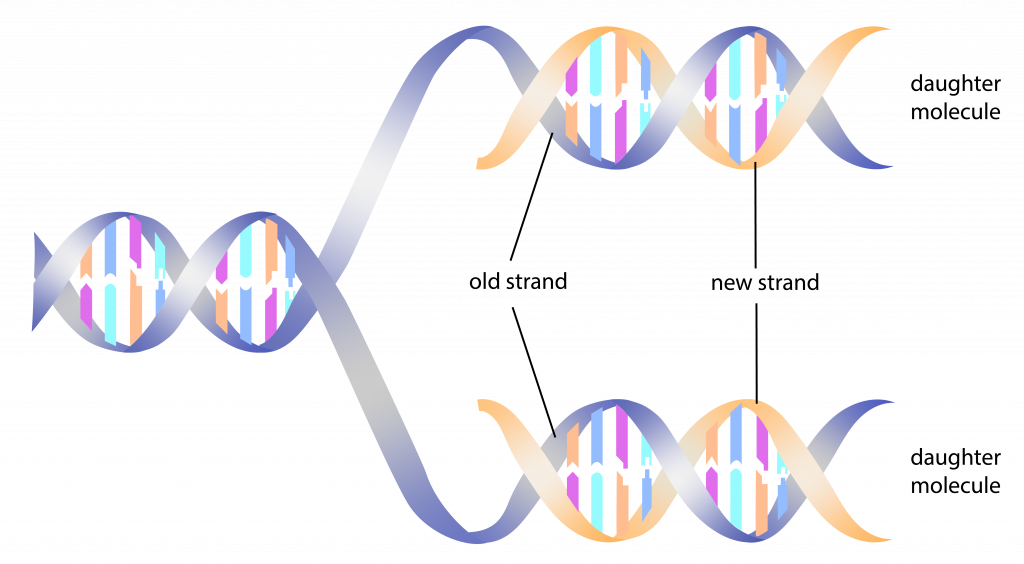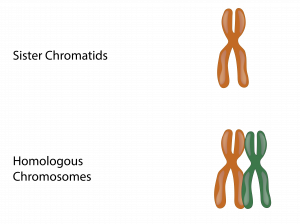6.3 Mitosis is how most of our cells divide
Recall our earlier discussion of cell structure and the location of chromosomes (Chapter 3.7). Over 99% of the human cells in your body copy themselves using a process called mitosis. In mitosis the cell makes a near-identical copy of itself and splits in two. The two new cells have the same DNA as the original, or parent, cell and are nearly identical copies of each other. When your body creates new skin after a scrape or when a child grows taller, this is all due to mitotic cell division.
Prior to mitotic cell division, all the DNA in the nucleus makes a full copy of itself. During this process of DNA replication, the two strands of DNA in the double helix separate and each strand is used as a template to create a new strand. The two resulting DNA molecules each have one parent strand and one newly synthesized strand. This semi-conservative process of DNA replication is highly accurate, making less then one mistake (or mutation) every 200 million base pairs.

After DNA replication, the steps of mitosis can proceed. During the first step, prophase, the DNA of each chromosome condenses into tightly wound structures called chromatids. Sister chromatids, or chromatid pairs, contain the two new copies of the DNA—held together in the middle by a structure called a centromere.

During metaphase the chromatid pairs line up in the center of the cell. During anaphase, the sister chromatids are pulled apart to opposite sides of the cell by structures called microtubules. Finally, two new nuclei form around the DNA (telophase), and the cell divides down the middle (cytokinesis), forming two cells from the one. These two cells are identical to the original cell and identical to each other (aside from a small number of mutations).
Recall that most of the cells in your body have two copies of every chromosome, one inherited from your mother, and one inherited from your father. Together the two copies are termed homologues. When mitosis is completed the two new cells still have two sets of chromosomes or homologous pairs, just like the original. This concept of homologous pairs is important to our understanding of sex and the generation of genetic diversity. Pay attention to what happens with homologous pairs in the process of meiosis—described next.

Check Yourself

